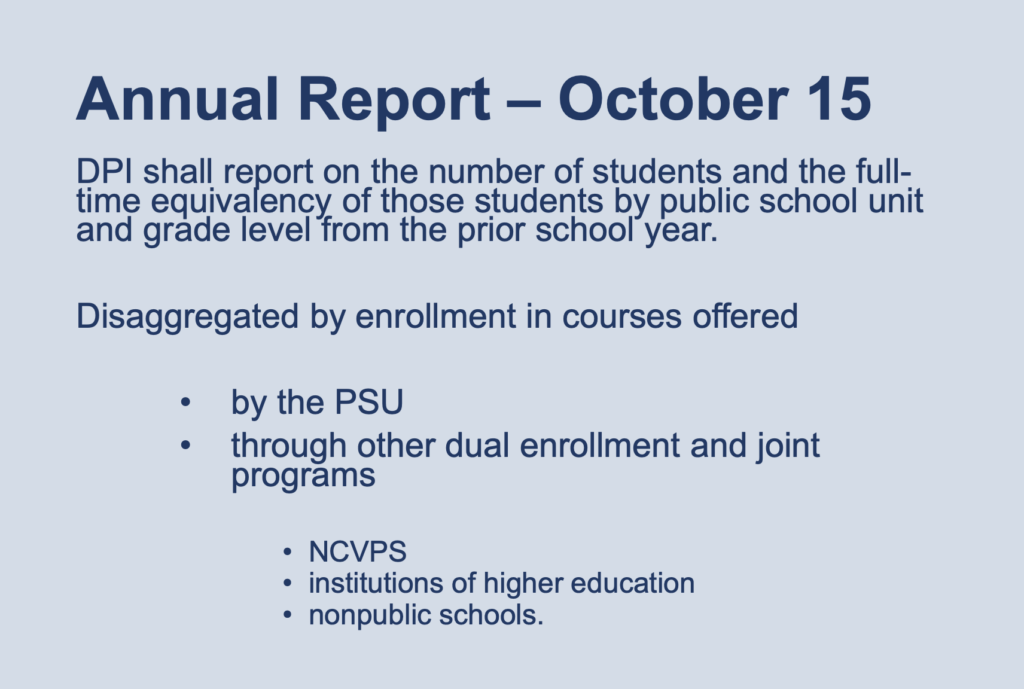
Share this story
The State Board of Education reviewed a report to the General Assembly showing how the state could possibly use full-time equivalency (FTE) as a way of funding schools.
State Board Vice Chair Alan Duncan set up the discussion by talking about the origin of the report as well as some of what he and other Board members have been hearing from school districts.
“There is a lot of concern out in districts about this,” he said.
Schools currently use average daily membership (ADM), which essentially stands in as a measure of the number of students in schools.

FTE is a way to measure the amount of course hours taken by students. This measure is typically used to fund institutes of higher learning, such as universities and community colleges.
The formula that DPI came up with for using FTE is that 300 minutes of instruction would equal 1 FTE. An individual student could not be counted for more than 1 FTE.
Brent Williams, Lenoir County Public Schools superintendent and 2021 Superintendent of the Year, told Board members that one of the biggest concerns he is hearing has to do with Career and College Promise, the program by which high school students can take classes at community colleges.
He said the program wasn’t always as successful as it is now because public schools and community colleges used to have to compete for credit for their students. But, he said, the relationship improved when both were able to get ADM (for public schools) or FTE (for community colleges) for the same student.
“We will go back to, at best, more friction,” he said, “at worst, out and out competition for students.”
Alexis Schauss, CFO of DPI, said that another of the potential issues with using FTE is that the student information system used by DPI isn’t designed for the task.
“It is kind of designed for Average Daily Membership,” she said.
Schauss also mentioned how much more complex public school is than community college or universities when it comes to funding because student time in school isn’t so easily captured as it might be with, for instance, a three-credit college course.
Board member Olivia Oxendine said she has heard concerns from superintendents that they haven’t been able to weigh in.
State Superintendent Catherine Truitt emphasized that the idea for this report didn’t come from DPI or the State Board.
“It’s important to understand that this is not a recommendation. This is the General Assembly saying ‘Thou shalt devise, and send us,'” she said.
She said she didn’t think it would have occurred to anyone at DPI or the State Board to ask for local superintendent insight in advance of working up the report, adding that she hopes that if lawmakers decide to make a change they seek input from school and district leaders. She said that DPI’s legislative team will keep district leaders informed about matters related to this as it continues to be discussed.
Truitt said that in conversation with lawmakers last week, she heard that this look at FTE was simply an attempt to look at the possibilities, rather than a harbinger of more action to come.
A provision in the long session budget directed the State Board to figure out a formula for using FTE as a measure for per-pupil funding rather than ADM. The State Board must report this forumula to lawmakers by April 15.
The provision also directed the state Department of Public Instruction (DPI) to report to lawmakers the FTE of public school students on Oct. 15 of each year.

A move to funding based on FTE rather than ADM would be a dramatic departure from the way education has traditionally been funded in North Carolina.
The Board will vote Thursday on whether to accept the report and send it to the General Assembly. There is no reason to expect they will not. Duncan said all the Board is voting on is the report, and that the Board’s vote does not launch or indicate a move to funding based on FTE.
See the report to the General Assembly here. See the presentation below.

